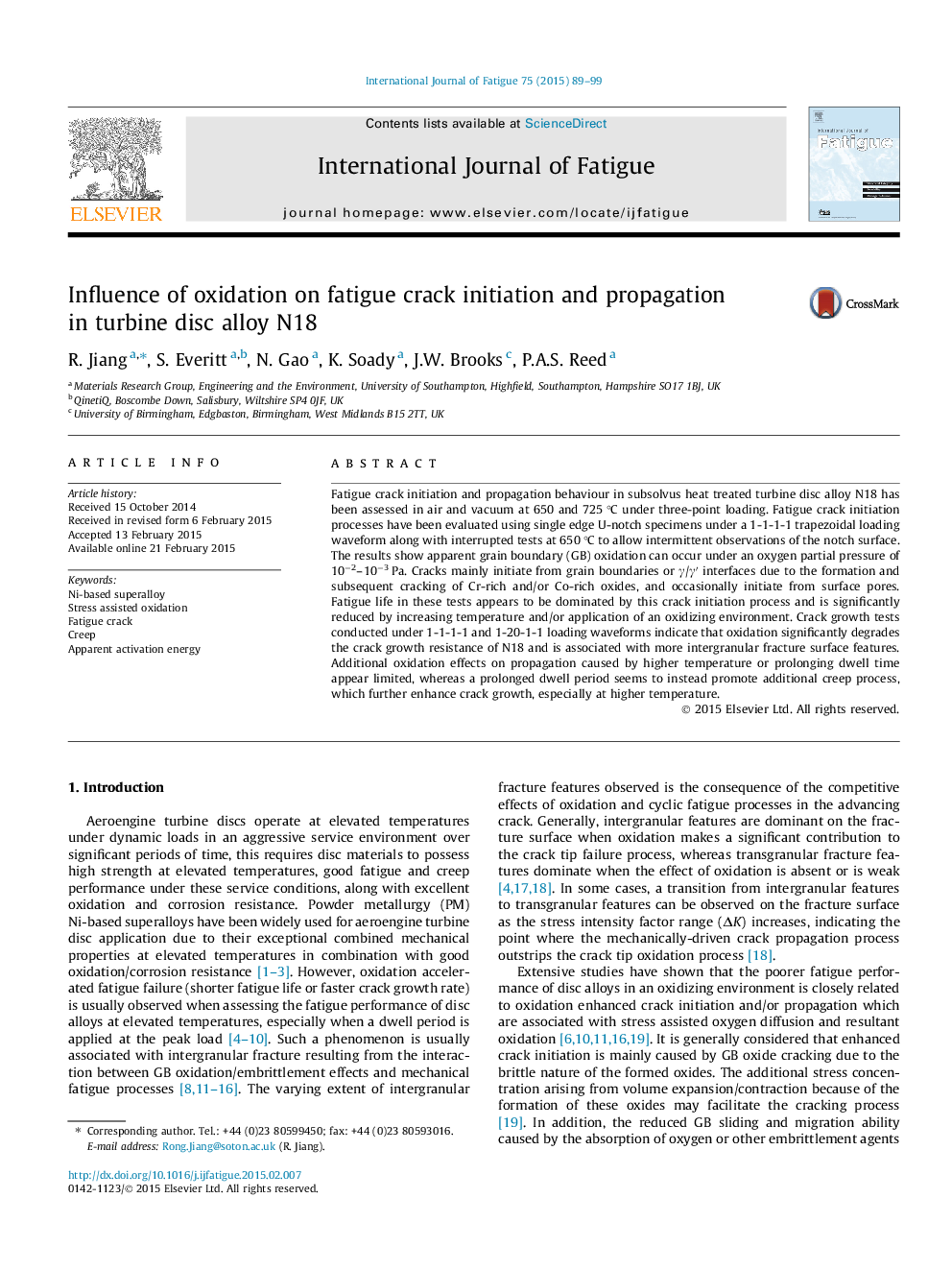| Article ID | Journal | Published Year | Pages | File Type |
|---|---|---|---|---|
| 780650 | International Journal of Fatigue | 2015 | 11 Pages |
•Crack initiation is related to Cr and Co oxide formation and cracking in N18.•Fatigue life appears to be dominated by oxidation-induced crack initiation process.•Oxidation accelerates crack growth associated with intergranular fracture.•Long dwell loading cycle causes a superimposed creep damage.
Fatigue crack initiation and propagation behaviour in subsolvus heat treated turbine disc alloy N18 has been assessed in air and vacuum at 650 and 725 °C under three-point loading. Fatigue crack initiation processes have been evaluated using single edge U-notch specimens under a 1-1-1-1 trapezoidal loading waveform along with interrupted tests at 650 °C to allow intermittent observations of the notch surface. The results show apparent grain boundary (GB) oxidation can occur under an oxygen partial pressure of 10−2–10−3 Pa. Cracks mainly initiate from grain boundaries or γ/γ′ interfaces due to the formation and subsequent cracking of Cr-rich and/or Co-rich oxides, and occasionally initiate from surface pores. Fatigue life in these tests appears to be dominated by this crack initiation process and is significantly reduced by increasing temperature and/or application of an oxidizing environment. Crack growth tests conducted under 1-1-1-1 and 1-20-1-1 loading waveforms indicate that oxidation significantly degrades the crack growth resistance of N18 and is associated with more intergranular fracture surface features. Additional oxidation effects on propagation caused by higher temperature or prolonging dwell time appear limited, whereas a prolonged dwell period seems to instead promote additional creep process, which further enhance crack growth, especially at higher temperature.
